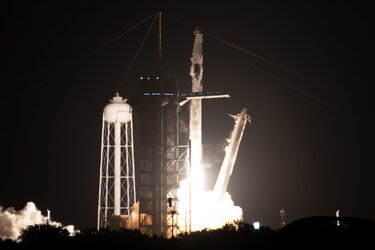

Mission Alpha liftoff
Liftoff of the Falcon 9 rocket and Crew Dragon spacecraft with ESA astronaut Thomas Pesquet, NASA astronauts Megan McArthur and Shane Kimbrough, and Japanese astronaut Aki Hoshide. The Crew-2 spend around 24 hours travelling to the International Space Station. The rocket lifted off at 11:49 on 23 April 2021 from Launchpad 39A in Cape Canaveral at NASA’s Kennedy Space Center in Florida, USA.
Thomas is the first ESA astronaut to fly in space in a vehicle other than the Russian Soyuz or the US Space Shuttle, and the first ESA astronaut to leave Earth from Florida, USA, in over a decade. This is his second flight, his first mission called Proxima saw Thomas fly to the Space Station on a Soyuz from Baikonur in Kazakhstan and his Expedition broke records for amount of hours spent on research at the time.
Thomas’ second mission to the International Space Station is called Alpha. This is after Alpha Centauri, the closest stellar system to Earth, following the French tradition to name space missions after stars or constellations.
Over 200 experiments are planned during Thomas’s time in space, with 40 European ones and 12 new experiments led by France’s space agency CNES.





